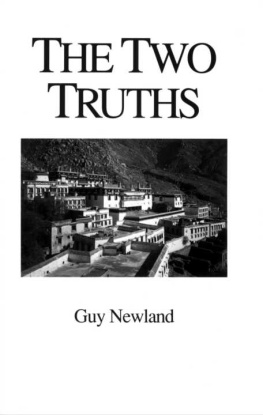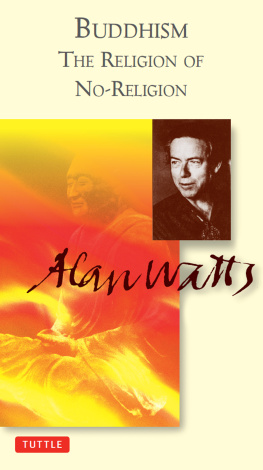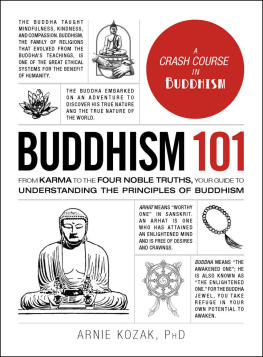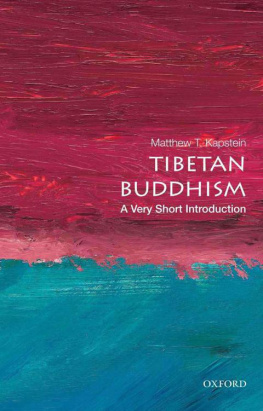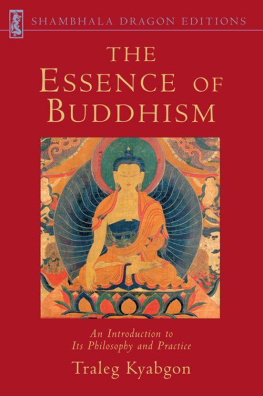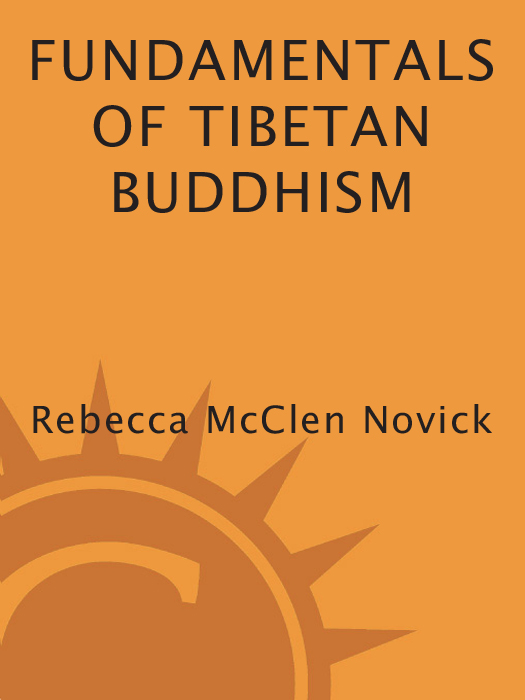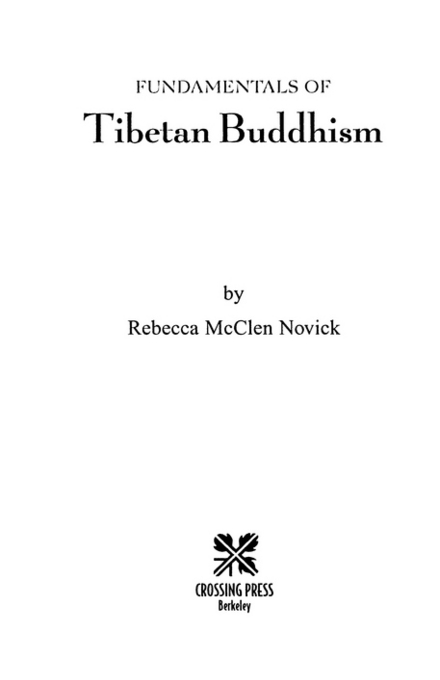All rights reserved. Published in the United States by Crossing Press, an imprint of the Crown Publishing Group, a division of Random House, Inc., New York.
www.crownpublishing.com
www.tenspeed.com
Crossing Press and the Crossing Press colophon are registered trademarks of Random House, Inc.
Novick, Rebecca McClen.
Fundamentals of Tibetan Buddhism / by Rebecca McClen Novick.
p. cm.
Includes bibliographical references.
1. Buddhism China Tibet. 2. Tibet (China) Religion.
I. Title.
BQ7604 .N68 1999
294.3923DC21
98-49025
I am deeply grateful to Geshe Tsultim Gyeltsen for his radiant example, to all the teachers of the Tibetan Buddhist tradition for making their wisdom available, and to Lotsawa Tenzin Dorjee for his unwavering generosity of time and knowledge. Thanks is also due to Ven. Thubten Chdrn, Jesse Fenton, and John Jackson for sharing their superior knowledge of Dharma. Any errors in this book are mine, not theirs. I am also grateful to Bill Kane, to everyone at The Crossing Press for their support and to my husband, Ronny, for his love, patience, humor, and cooking throughout this project.
When the Iron Bird flies and horses run on wheels,
the Tibetan people will be scattered like ants across the world.
E IGHTH C ENTURY T IBETAN P ROPHECY

My first contact with Tibetan Buddhists was as an interviewer working in the Tibetan refugee communities of Northern India. I was recording testimonies of torture and brutality in Chinese-run prisons in Tibet. The survivors I spoke with displayed an uncanny ability to come to terms with the agonies they had experienced. Their suffering was undeniable, and yet neither were they vengeful nor were their spirits broken. They remained radiant and resilient, often even expressing compassion for their oppressors. What was their secret? They answered again and again, It was my faith in Buddhism.
A true test of any spiritual practice must be whether it can help you in times of crisis. It was clear from the Tibetans with whom I spoke that their worldview provides a perspective from which a deep and holistic understanding of existence, with its joys and its sufferings, can be built. For Tibetan Buddhists, daily life is an aspect of spiritual practice rather than the other way aroundas is so often the case in Western society, and it is both inspiring and challenging to experience a culture in which the highest ambition is to become a human embodiment of compassion and the highest vocation is to develop the necessary wisdom to achieve this.
This book does not attempt to be a comprehensive guide, for Tibetan Buddhism is a vast and multifaceted arena (the Buddhist canon from which Tibetan Buddhism evolved is larger than the Encyclopedia Brittanica). I have, however, attempted to cover the fundamentals of this system within the limits of my understanding, in a straightforward and informative manner as a foundation for further study. Ironically, the treasure of Tibetan Buddhism has come into our hands because it is being destroyed in its homeland. The Chinese occupation of Tibet has caused a spiritual diaspora of Tibetan Buddhist teachings around the planet. In these times, we have an unprecedented opportunity to learn from this tradition, and whichever spiritual path we ultimately follow, I believe that we will forever be richer for having done so.
Introduction
My religion is loving kindness.
D ALAI L AMA XIV
In Tibetan, the word for Buddhist means insidersomeone who looks not to the world but to themselves for the source of peace and happiness. The purpose of Buddhism is to relieve suffering; it begins with the premise that all suffering, however real it may seem, is the product of our own minds. Buddhism offers a remedy for every spiritual ailment. In fact, the language of medicine is often used in Buddhist scriptures as a metaphor for the spiritual journey: The spiritual mentor is the doctor, the practitioner is the patient, the negative mental and emotional states are the illnesses, and the antidotes to those conditions are the teachings.
Tibetan Buddhism is a way of experiencing the world, more than it is a religion or a philosophy. The Buddha did not teach a theory describing the universe; he taught a methoda prescriptionfor how to live in it. These teachings entice us to give up our defense against change. They inspire us to realize a completely courageous approach to life, without divine authorities, without even familiar psychological concepts of self-identity, and from that point of fearlessness to reach out to those still caught in the web of suffering. The Tibetan form of Buddhism goes a step further than the more ascetic schools, which emphasize a denial of worldly experience. It allows for a person to get completely involved in human affairsin family, politics, art, and businesswhile fostering a fundamental awareness that it is all cosmic theater. Being free from the world illusion allows one to act freely in it. Tibetan Buddhism is, therefore, an attractive and sympathetic path for those who have chosen not to enter monastic life but to remain in the world to pursue their spiritual goals.
The historical Buddha, Shakyamuni, has taken on divine properties in Tibetan Buddhism, and serves as a template for the boundlessness of humanitys spiritual potential. This potential for Buddhahood is said to lie within every one of us. The Dalai Lama says that it is something we have always had, from time without beginning. We are not talking about something completely foreign to our nature, which might suddenly appear like a mushroom, as though without seed or cause. There are no limits; everything is possible once we fully recognize and comprehend at the deepest level who we truly are. A Buddha is nothing less than a living realization of this understanding.
Such thinking might seem like an impossible dream, because presently we are the product of deeply ingrained habits that have become reinforced, say the teachings, through lifetimes of imprinting and social conditioning. It is only when we attempt to escape this mechanical behavior that we realize how trapped we have become. Buddhism offers a way outa way that begins with our own awareness of our captivity and the desire to be free. Buddhism is like a hologram. Each part eventually leads one to the realization of the whole. Through whatever door you approach the teachings, whether it be impermanence, compassion, emptiness, or the karmic law of cause and effect, you will ultimately arrive at the same place, for each aspect of the teachings is just one facet of an integrated and interdependent understanding of oneself and ones place in the universe. Buddhism is highly evolutionary, offering the possibility for everyone to completely transform themselvesthe evolutionary momentum in this case being ones own aspiration for Enlightenment.



